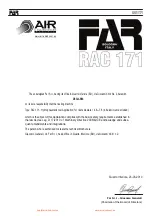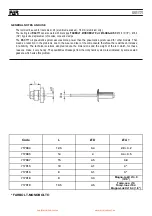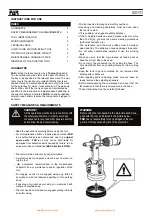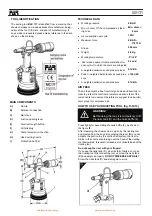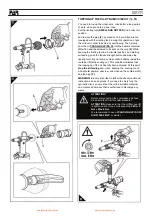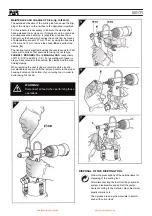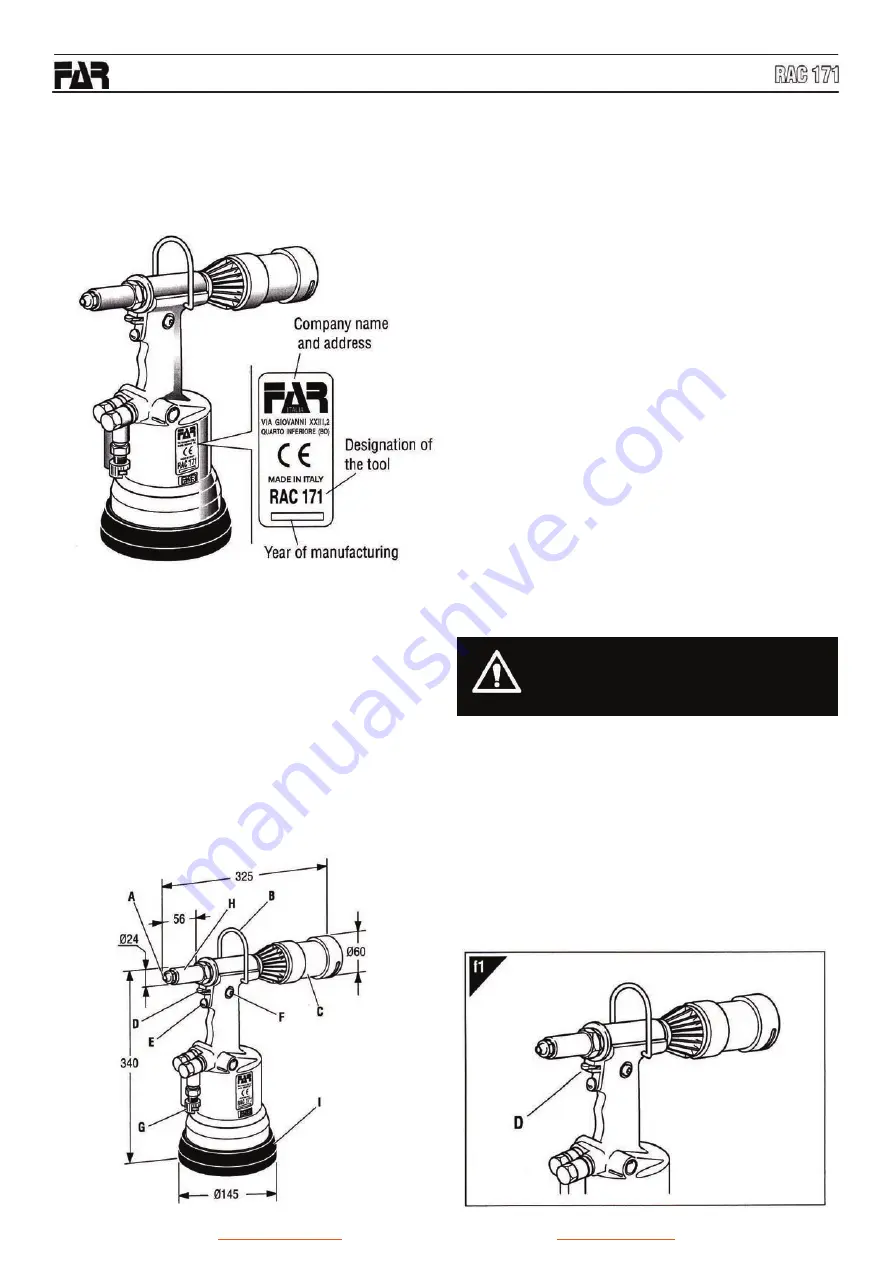
TOOL IDENTIFICATION
The riveting tool
RAC 171
is identified from a marking that
shows company name and address of manufacturer, desig-
nation of the tool, CE mark and year of manufacturing. If
any service is requested, please make reference to the data
shown on the marking.
TECHNICAL DATA
Working pressure
6 BAR
Min. int. diam. Of the compressed air feed-
ing hose
Min. diam =
8 mm
Air consumption per cycle
10 NI
Maximum force
6 BAR –
17273 N
Weight
2.9 Kg
Working temperature
-5°/+50°
Root mean square in total acceleration fre-
quency (Ac) to which the arms are subjected
2.2 m/s²
A-weighted emission sound pressure level
67 dBA
Peak C-weighted instantaneous sound pres-
sure
<130 dBC
A-weighted emission sound pressure
87 dBA
Stroke
25.5 mm
AIR FEED
The air feed must be free from foreign bodies and humidity in
order to protect the tool from premature wear and tear of the
components in movement, therefore we suggest to use a lubri-
cator group for compressed air.
Nozzle
B)
Balancer
connec on
C)
Nails
tank
D)
Suc on
opening
lever
E)
Tensile
strength
bu on
F)
Oil
tank
plug
G)
Compressed
air
connec on
H)
Head
carring
nozzle
I)
Protec on
bo om
MAIN COMPONENTS
HOW TO USE YOUR RIVETING TOOL (fig. f1-f2-f3)
WARNING!
Before using the tool, it is compulsory to fit
the nails tank (
C
) and the nails baffle (
L
).
Press lightly for assembling the nails baffle (
L
), as shown in
the figure
f3
.
After clamping, the sheared nail is piped by the riveting tool
and ejected from the back. By swinging the lever (
D
) you can
activate the suction. By the suction nail system, the rivet re-
mains in the nozzle also turning over the head of the riveting
tool downwards: this detail increases a lot of usefulness of the
riveting tool.
Do not keep the rivet with your fingers!
If you use the nails tank (
C
), when its full of nails do not use
the riveting tool. Disconnect the tool, unscrew the nails tank
(
C)
and empty it properly.
DO NOT DISPERSE ANY NAIL!
Screw the nails tank (
C
) and start again to work.


